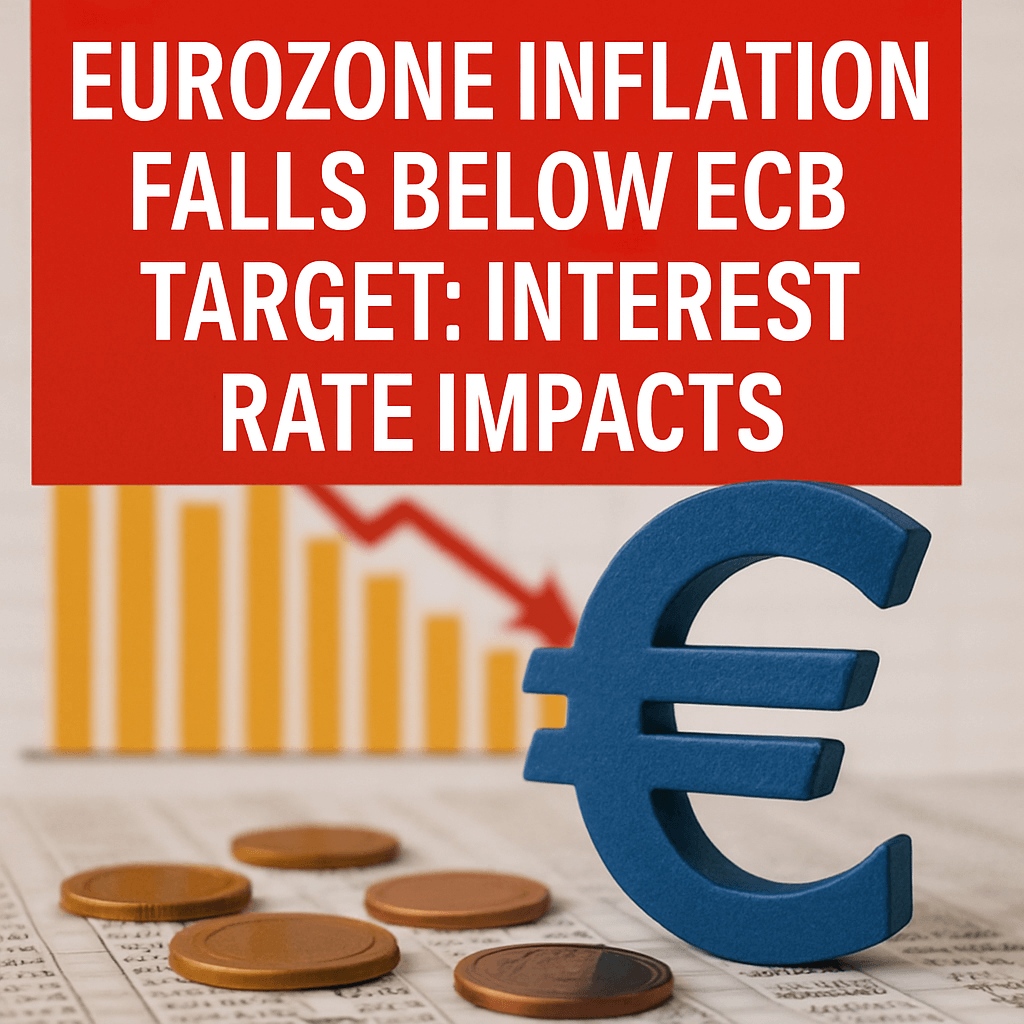Eurozone Inflation Falls Below ECB Target: Interest Rate Impacts

Recent data has certainly shifted the landscape in the Eurozone, indicating a downward trend in inflation as it fell below the ECB’s target of 2% for the first time in a significant period. This has sparked discussions about potential interest rate cuts, which would have considerable implications for monetary policy across the 19 countries that use the euro.
Current Inflation Landscape
In May, the Eurozone saw inflation rates dip to 1.8%, primarily driven by a decrease in energy prices and consumer goods costs. This decline represents a vital turning point for the European Central Bank (ECB) as it allows for new considerations regarding its monetary policy strategy. The ECB has maintained a cautious stance, incrementally raising rates since mid-2022 in an effort to combat high inflation rates resulting from supply chain disruptions and geopolitical tensions.
Implications of Falling Inflation
The ramifications of this decline in inflation are complex. Falling inflation could provide the ECB with leeway to consider lowering interest rates, which have been set at 4% since the last hike in March 2024. Analysts suggest that a cut in interest rates could stimulate economic activity, encouraging borrowing and investment as consumer confidence strengthens.
Impact on Real Wages
Amid this backdrop of changing inflation, the Organisation for Economic Co-operation and Development (OECD) issued the Taxing Wages 2025 report, which highlights challenges specific to real post-tax incomes in various European nations in 2024. Among the 27 countries analyzed, seven countries showed declines in real post-tax income for the average single worker without children.
Countries Experiencing Declines
- Italy: Despite an average wage increase of 3.9%, a rising personal average tax rate of 7.5% led to a minimal real wage growth of just 0.9% after accounting for inflation.
- Estonia: Here, an increase of over 4.5% in average tax rates combined with modest wage growth lead to a contraction in real post-tax income.
- Czechia: Similar trends were observed, where increasing tax contributions resulted in lower earnings.
- France: Real wages showed a slight uptick of 0.7%, but this was insufficient to counterbalance a 1.7% increase in personal average taxes.
- Greece, Belgium, and Spain: These nations also faced declines, highlighting broader economic pressures across the region.
Analysis of Increased Real Post-Tax Income
In contrast, notable increases in real post-tax incomes were recorded in Portugal, the UK, and Turkey:
- Portugal: The personal average tax rate fell by 8%, with real wage growth at 4.7%, promoting a favorable economic environment.
- UK: A substantial drop in the average tax rate by 8.7% enabled moderate real wage growth to push post-tax incomes higher.
- Turkey: While faced with a 3.9% tax rate increase, the country saw a remarkable 15.5% growth in real wages.
Understanding Real Post-Tax Income
Real post-tax income is defined as income remaining after taxes, adjusted for inflation. A decrease suggests that consumers have less money to spend, leading to diminished purchasing power over time. This economic concept is crucial for assessing the financial health of individuals across the Eurozone.
The Challenge of ‘Bracket Creep’
Another critical aspect raised by the OECD report is the phenomenon of ‘bracket creep.’ This occurs when wage growth pushes taxpayers into higher tax brackets due to inflation, ultimately leading to increased income tax liabilities without corresponding actual income increases. Tax expert Cristina Enache of the Tax Foundation emphasizes the importance of indexing income tax to inflation to alleviate this issue, proposing that a modernization of fiscal policies could help prevent significant fluctuations in post-tax incomes for workers.
Conclusion
The current economic climate in the Eurozone presents both challenges and opportunities. The recent decline in inflation has implications for the ECB’s monetary policy, potential rate cuts, and the overall economic environment’s influence on real post-tax income. Policymakers must carefully monitor these trends to implement strategies that promote economic stability while ensuring equitable tax policies that reflect true economic growth.
Source: OECD’s Taxing Wages 2025